Columbia Flood Restoration Help
5 Trends in Hardwood Flooring
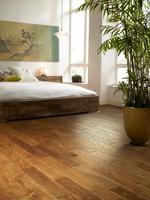
Hardwood floors command attention in any environment. It is a distinct flooring product that offers durability, strength and elegance. In today’s flooring market, there are seemingly endless choices available for the customer. It can be a daunting task to decide on just one look for a product that will likely be in your home as long as you live there…or maybe longer.
So how do you choose? How do you embrace trends but pick a classic floor that will not go out of style? We have some tips for you that should help you make a choice that you will love for years to come.
Mixed Widths
If you really want hardwood floors, but you want something a little bit different, try mixing it up. One trend in our industry that we are seeing is combining smaller width hardwood boards with wider boards. When these floors are completed, it gives a distinct randomness that offers customers a new twist on a classic product. Don’t worry about dusting off your algebra notebook, though. There are hardwood floors that have the varying widths neatly packaged together to save you the hassle. All you have to do is decide on the color and species.
Weathered Looks
Hardwood flooring with a weathered appearance is gaining in popularity. If you haven’t seen today’s new “old” styles, it is worth the look.
Do you like a contemporary style? Don’t panic. Tim McLendon, a featured interior designer for HGTV and other design publications told us that “the current trend integrates contemporary style along with rustic design.” You can embrace this trend and blend your contemporary tastes to make a dynamic and enjoyable living space.
Though trends may not last forever, the weathered look flooring appears to be a style we will continue to see for years to come. You can have the aged classic look, but get it instantly.
Say “Hey” to Gray
Gray is in. While it is easier to change your wall color and your pillows to gray than your hardwood floors, there is a wide array of colors that will complement the popular trend of using gray in your home’s décor. From medium to light browns with a hint of gray to full-on gray hardwoods, there are some great color selections available. And do not worry – your floors will still look great when beige eventually becomes the new gray…again.
More Than Common
Look out bedrooms, here comes the hardwood! Another trend we are seeing is that hardwood floors are being chosen over carpet that extends beyond the common areas of the living rooms, dining areas and hallways. While people sometimes say they want the comfort of carpet when they step out of bed, more and more of them are choosing hardwood for their bedroom floor. If you like the feel of carpet with the character of hardwood, you could always add an area rug. It is a great way to have the best of both worlds.
Engineered Hardwood Floors
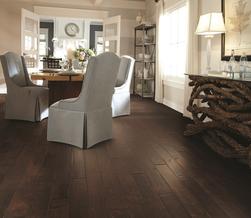
One last trend we are seeing is that people are choosing engineered hardwood over solid hardwood floors. There are big differences between the two. Don’t let the term “engineered” scare you, though. Engineered hardwood flooring is all-wood. Though we will not be tackling the differences of these products fully in this article, we will touch on two things as it relates to the trends:
People want wider boards. With the trend of mixed widths hardwood comes one of the reasons why customers are choosing engineered hardwoods over solid hardwoods…stability. As a rule of thumb, the wider the board, the less dimensionally stable it is. Moisture issues in the home environment can cause cupping (creating a “washboard effect”) in your hardwood floor. Without getting too technical, the construction of engineered hardwood flooring gives you the freedom to own the wider boards without the risks. If you want a wider board, think engineered.
People want versatility and options. Home construction on a concrete slab is becoming more prevalent. If you want a versatile product, solid hardwoods have their limitations. They can only be installed on a wood subfloor by nailing or stapling them down. Engineered hardwood floors, however, can be installed on, above or below grade (upstairs, main floor or basement). You can glue, float, staple or nail engineered hardwood and it can be installed on either a concrete or wood subfloor. What does this mean for you? Options. These options allow you to carry your flooring style throughout your home without regard to the obstacles that hold you back with traditional solid hardwood floors.
No matter which style and color you think is best, it is easy to agree that hardwood floors have a stunning impact on any home. Don’t just settle for something nice. In today’s marketplace, you should be able to find something that you absolutely love. Happy hardwood hunting!
Paul Prince is President of DOOR TO DOOR FLOORS, INC., a shop-at-home carpet & flooring dealer in Columbia, SC, and has 25 years’ experience in the flooring industry. His company has been awarded the Angie’s List Super Service Award for the last three consecutive years as a result of his company’s commitment to excellent customer service.
Waterproof Flooring?
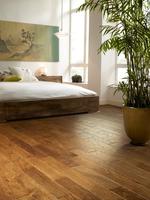
There are several flooring products on the market today that claim to be waterproof. There are even more products that claim to be moisture-resistant. A moisture-resistant floor covering is a good thing, and so are waterproof products, but it is important to consider that these products do not make your subfloor waterproof. There are several things to understand about these products so that you don’t feel cheated if the claims of the manufacturer do not give you the protection you thought you were buying with your new floor covering.
In 15 years of working closely with insurance and restoration companies, I get the same question over and over from people who have experienced a flood in their home. The question they ask me is “how can I keep this from happening to me again when my pipes break?” My best answer is to be sure you do not to skimp on your insurance coverage. Get with your insurance company and be sure you have replacement costs coverage instead of depreciated costs coverage. It is better to spend a little extra on your insurance premium than to buy a waterproof floor.
Rooms are different shapes and sizes, but they have one thing in common – they all have edges. So, if you have a waterproof floor covering, and a broken pipe creates a swimming pool in your house without your permission, you will have water damage at the edges of the room. Since your waterproof floor is doing its job, it sends the water to the edges of the room, thus getting underneath your waterproof floor. If the subfloor is made of wood, the water will find its way there over the edges and cause a need to have some, if not all, of it to be replaced. While the product above is waterproof, wood subfloor is not. The end result is you having to file an insurance claim to replace your floor. You might think that the insurance or restoration company would keep your flooring and re-install it, but that is not how it works. Used floors don’t get re-installed.
If you are considering a waterproof floor in known “wet” areas, like around a hot tub or sauna, be aware that having a waterproof floor in those areas would produce an environment ripe for microbial growth. Even if your flooring is on a concrete slab, if you did have a pipe break and flood your home, the waterproof flooring would need to be removed to be able to dry the concrete subfloor properly before installing a new floor. The closest thing to a true waterproof floor covering is having ceramic tile on a cement slab. And since people do not like that combination in every room of their house, you might as well consider the moisture-resistant floor coverings as an option when you choose your new floor.
Even though you may still want to purchase the waterproof flooring, I would like to build the case that you may only need a moisture-resistant floor covering. Water-resistant flooring is all you need for daily life – spilling 2 quarts of Kool-Aid or when your new puppy gets excited – those are the fingerprints of life that can be wiped off. Waterproof is not necessary for those things. Hardwood floors, specialty carpet, vinyl and tile can all withstand those daily challenges.
If you are in the market for new flooring, check out some of these great moisture-resistant and waterproof flooring choices from Shaw:
WATERPROOF
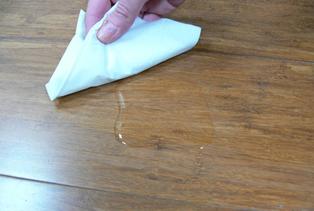
Floorté™ is the line of luxury vinyl (also called “resilient flooring”) that is strong, durable, flexible and waterproof. You can get a wood look that authentically emulates the particular species and style of real wood.
LifeGuard is waterproof-backed carpet with a lifetime warranty. It is marketed under the “Life Happens” branding because it is designed to handle the everyday spills and thrills that take place in people’s homes. Shaw’s R2X is one of the industry’s most innovative stain and soil repelling systems.
MOISTURE-RESISTANT
Laminate with VersaLock AG and LocNPlace floors resist moisture. These flooring systems do not need adhesives and can be walked on right away without needing time to cure.
Epic Engineered Hardwood has a greater density and is a product that doesn’t expand and contract as much as other wood flooring when the seasons change. It is very friendly to the environment at it takes 50% less newly harvested wood to manufacture.
Moisture-resistant and waterproof products are good things for consumers. Since it is virtually impossible to make every floor in your home waterproof, you won’t have to feel limited in your new flooring selections. You can shop with confidence, knowing that moisture-resistant floors are as viable an option as waterproof products for normal living.
Paul Prince is President of DOOR TO DOOR FLOORS, INC., a shop-at-home carpet & flooring dealer in Columbia, SC, and has 25 years’ experience in the flooring industry. His company has been awarded the Angie’s List Super Service Award for the last three consecutive years as a result of his company’s commitment to excellent customer service.
Flooring for Allergies
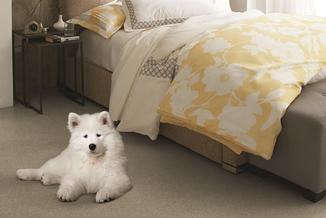
I am guessing that if you have allergies, or if someone in your family does, you have heard the debate of whether it is better to have carpet or hard surface floor covering in your home. Well, the short answer is, “it depends.” Multiple studies in the US and in Europe have been conducted over the last 5-7 years and they all have come to this same conclusion. In order to know what might be best for your home, you will have to read a little further.
Good house-keeping is more important than the type of flooring you have. If you are the type of person who likes a home that is kept immaculately clean, then hard surface flooring might be a more appropriate flooring choice for you. In this case, it will produce a cleaner environment. Experts would suggest – beyond cleaning your floors – that you keep closet doors closed, get rid of curtains, change your air filter regularly and wash linens weekly to keep allergens to a minimum. Additionally, if you are shopping for new furniture, consider leather or something that is easier to wipe clean than fabric-upholstered furniture. This will make for a cleaner environment, too.
On the other hand, carpet can serve as a filter for dust in homes that are not cleaned as frequently. It takes more air movement to lift dust into the breathing zone from carpet than from a hard surface floor. If you can’t remember the last time you cleaned your floors, don’t be embarrassed, but maybe carpet is a better choice for you. Other variables such as having dogs, cats, clutter, dusty bookcases and a smoker in the home could be more of an irritant than the type of floor covering you have. Consider your particular circumstances and see if there are more inexpensive changes you can make to your environment that could make a more positive impact on your allergies, prior to spending unnecessary dollars on getting new floor covering that is “cleaner.” It would be unfortunate to find out after the fact that you just ripped out the best flooring choice for your lifestyle.
When you purchase new flooring, you should mention your allergies to the flooring dealer so that they know to send a non-smoking installation crew. Also, if you decide that new carpet is right for you, it is important to ventilate your house for 72 hours immediately after installation. The reason for the ventilation period is that the new carpet smell can be a temporary irritant to allergy sufferers.
This advice comes to you from my personal experience as a 40-something year-old, asthma and allergy sufferer. Remember, it is important to consider the entire picture of your home environment prior to replacing your flooring. Don’t just fall for the “hard surface floors are better for people with allergies” adage.
Paul Prince is President of DOOR TO DOOR FLOORS, INC., a shop-at-home carpet & flooring dealer in Columbia, SC, and has 25 years’ experience in the flooring industry. His company has been awarded the Angie’s List Super Service Award for the last three consecutive years as a result of his company’s commitment to excellent customer service.
Columbia Flood Restoration Help
A sudden flooding of your home can be overwhelming. For residents of South Carolina, people experienced this where they never in a million years thought they would have to contend with a flood. The purpose of this article is to offer some tips for those of you who now find yourselves in unchartered territory. I offer this information based on my 25 years of experience in the carpet and floor covering business and with my experience working closely with restoration and insurance companies during most of those years. You should be careful while you are shopping for restoration services, but not so careful that you don’t get help. Find a reasonable balance between due diligence and trust. The key factors below should help you find a quality restoration company.
One of the most important assets you can have during this time of restoring your home is patience. It will help you to be mentally prepared for delays throughout this process. There are only so many contractors available to do the work that needs to be done when large areas have experienced massive flooding. Managing your expectations can reduce your stress level during the restoration of your home.
Stabilizing the Environment
There is a crucial time frame of the first 10-15 days where actions need to be taken. Whether you have insurance, qualify for FEMA assistance or you will be paying for your restoration out-of-pocket, there is a short window of time where immediate issues need to be addressed, or it could cost you. Unless your home’s environment is stabilized, it will continue to deteriorate until the cost of restoring your home environment surpasses what it would have cost you for the initial mitigation. Wood studs could warp, microbial growth could accelerate and subfloors could need to be replaced, whereas the proper drying and sanitization equipment could have saved you from having to do more extensive repairs. In the case of the flooding in Columbia, sewer systems were compromised and that introduced highly contaminated water into the flooded areas. It is important that you either know what you are doing when it comes to clean-up, or you hire someone who knows how. Every insurance company understands that doing upfront damage control is a cheaper option when it comes to restoration.
Up-front Costs
Some restoration companies may require a deposit up front before they do the work. Do not feel like this is necessarily a company trying to scam you. The average residential mitigation (drying) costs are around $4,500 for this type of work, but that does not include demolition and removal. Some companies may require a deposit around 50% of the cost of the job ($2,250). If you have done your homework and you are comfortable that you have a quality company, this is seen as a customary procedure to ensure that restoration companies are able to collect for work that has been performed. Since a great majority of people do not have flood insurance, restoration companies are taking a risk to do expensive work for people who may not have the financial means to pay the bill at the end. A deposit helps them fund the extra manpower and leased equipment needed to quickly handle emergencies for the community. Remember, most of our restoration companies are good people who handle emergencies for a living. It is how they feed their families. They are not “preying” on the public any more than your doctor is hoping you will get sick.
Fair Pricing vs. Price-Gouging
While there are laws to protect consumers from price-gouging, here is another layer of protection. Most restoration companies use a program called Xactimate, which is estimating software for the insurance and restoration industry. This software indexes labor and material costs for each region of the country and should ensure that you are not being overcharged. Restoration and drying services are expensive, but they are less expensive in the long run as compared to unnecessarily ripping out materials and rebuilding your house.
In a time where price-gouging can certainly take place, it is important to find that balance between due diligence and trust. Columbia has some great contractors who have been, are and will be here to help you. Speaking for our company, we have decided to offer anyone who has been affected by the flood, the same contractor pricing that we give to our restoration company accounts.
Do Your Homework
In times of emergencies, you sometimes have to move fast. It doesn’t hurt you to take a few minutes to check around, though. Consult your local Better Business Bureau to see what companies to use, or maybe more importantly, which ones to avoid. Companies that you engage with should also be licensed with the Labor, Licensing and Regulation (LLR) Contractor’s Licensing Board.
If the company is from out of town, be sure to check the BBB in their home town. Also, the company should be licensed to do work in South Carolina. One additional suggestion is to ask if your restoration company has certification through the Institute of Inspection Cleaning and Restoration Certification (IICRC). This is a non-profit trade organization that establishes ethical and quality standards in the industry. Some people may be reluctant to use someone from out of state, but if our local businesses are overloaded, you may have to use someone that is not a local company to have your emergency needs addressed in a timely fashion. It is common for our local companies to go to another state to help out when they need it, so someone being here from out of state is not necessarily a bad thing.
If you need a restoration company, contact the BBB for a list of businesses, check out Angie’s List or call us. We would be happy to recommend a restoration company to you, as we work with several of them in the area.
Additional Resources:
South Carolina Flood Resources Page
Recommendations and Procedures for Cleaning Out a House or Business Following a Flood by Southwest Georgia Chapter of the American Institute of Architects.
Paul Prince is President of DOOR TO DOOR FLOORS, INC., a shop-at-home carpet & flooring dealer in Columbia, SC, and has 25 years’ experience in the flooring industry. His company is an A+ rated, Accredited Business with the Better Business Bureau and has been awarded the Angie’s List Super Service Award for the last three consecutive years as a result of his company’s commitment to excellent customer service. For more information, visit www.doortodoorfloors.com.
